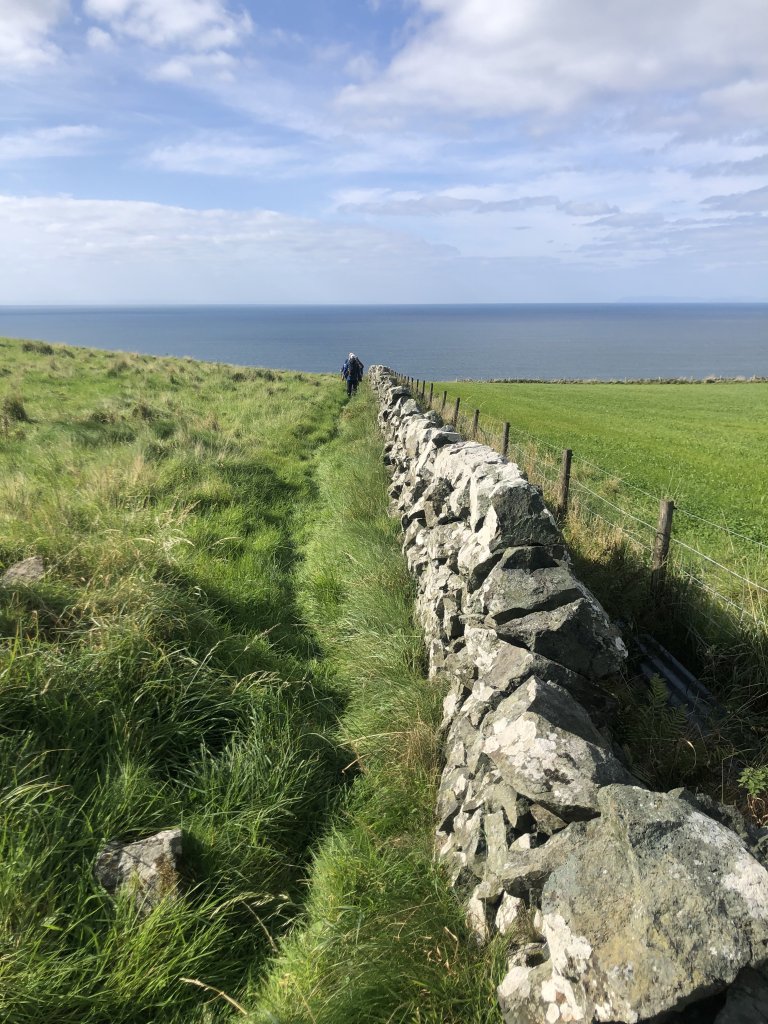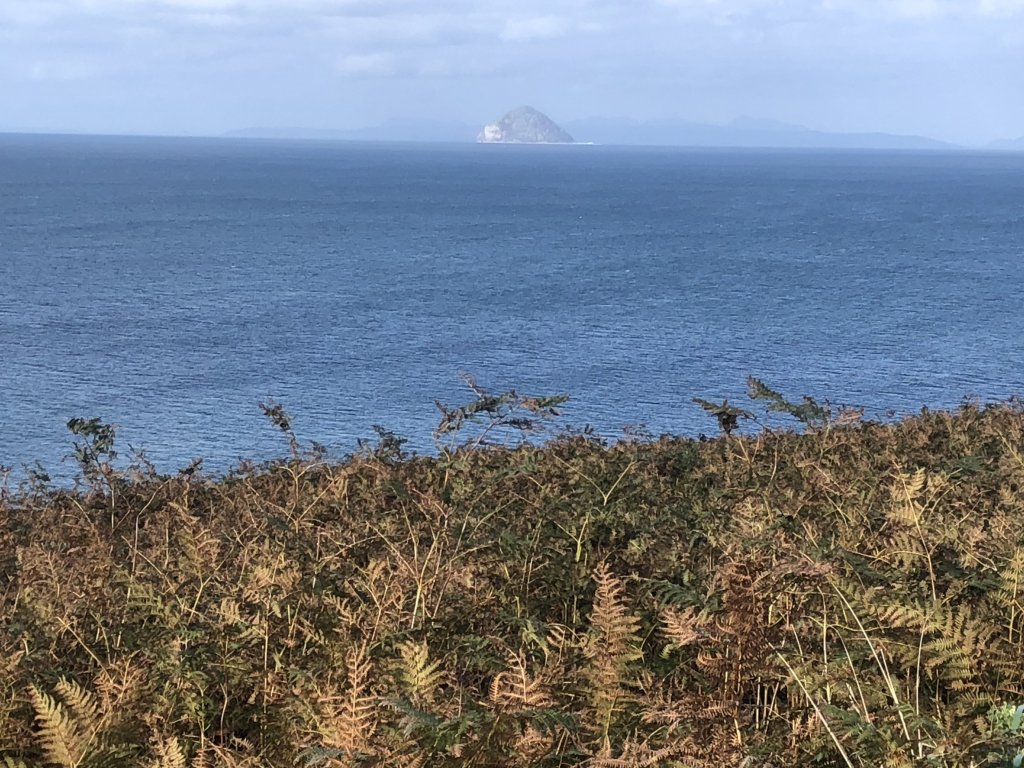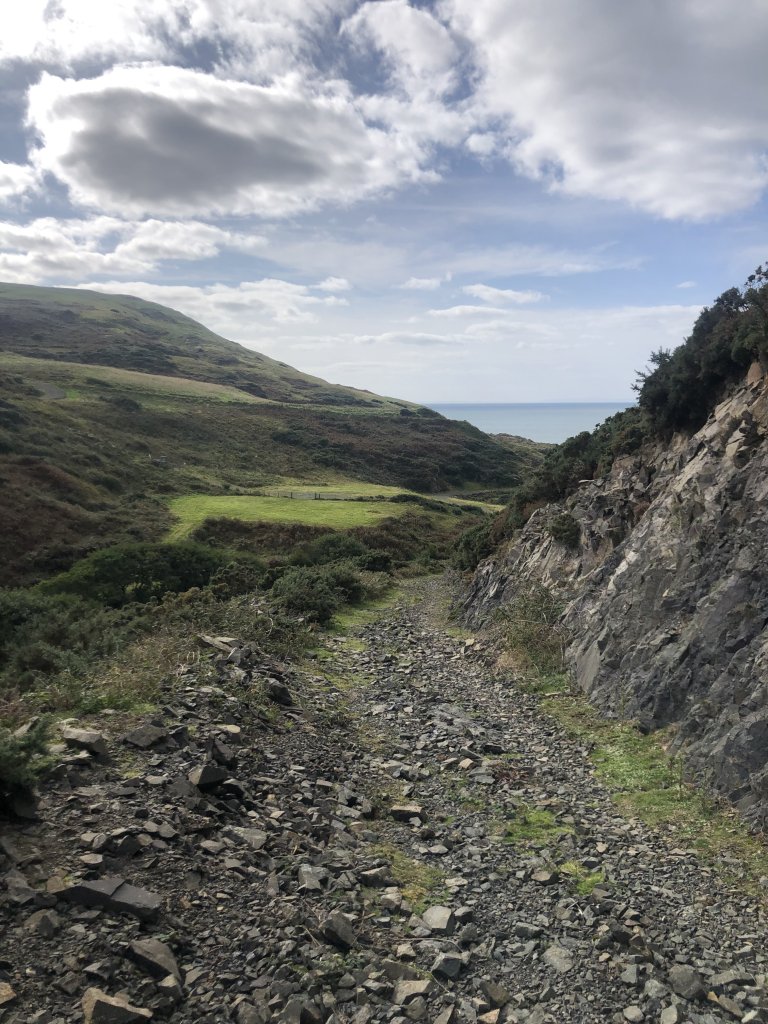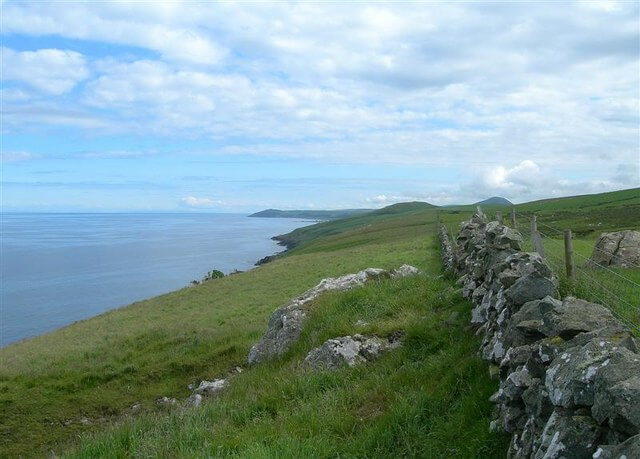Tunafish Bay: 9 miles and expanding
October 2, 2023, 6:57 am , by Richard Lutz

Richard Lutz can’t figure out why this walk across headlands gets longer each year
We are in Tunafish Bay. It overlooks a quiet nook in the sea. To the north, a long distance path trails the 100 mile shore. To the south, ferries steam in and out of Loch Ryan linking Scotland and Ireland.
John advises me there are actually no tuna here. I’m mistaken, he says… it’s Currarie Port. Always has been. I tell him that a decade ago, I first stopped on this empty spot and devoured a pile of tunafish sandwiches. That’s how it got its name. He nods.
Today the sheltered waters, once a smuggling port, are home to a dozen seals. They’re plunked on rocks, beaching in autumnal sun or cruising the shallows, heads popping up like periscopes, eyeing us eyeing them. If I had 180 degree vision, my view from left to right, from south to north, would be the blue outline of Irish hills, the green Rhinns of Galloway peninsula sticking out from the mainland like a hammerhead, the Corsewall Lighthouse that blinks at sea traffic, the outlying Mull of Kintyre, mountain ridges of Arran, and a hint of that strange volcanic plug balancing on the rolling waves like a Christmas pudding. It’s home to tens of thousands of diving gannets. It’s called Ailsa Craig:

The landscape reveals that our summer is now over. Southwest winds bend trees and hardy bushes. Hips and haws berries are a dimming red in the fading warmth. Ferns and bracken turn brown and copper.
We had approached Tunafish Bay by following the Shallochwreck Burn that bubbles west to the beach. Here, a decade ago, a baleful bull blocked our way, threw us a cautionary glare and then decided feeding off tough gorse was a better deal than petrifying a pair of walkers encased in gortex and prepared to jump a fence quickly.
We leave the little cove via the steep path overlooking the riverbed of The Balloch Burn. Looking back is the territory of geometry: sloping hills, vertical rock walls, a straight line of water, the mass of blue sky, a lush green pasture where the Shallochwreck meets Balloch Burn:

The track out is steep and rocky. We round a hill called simply (and inexplicably) ‘Donald Bowie’ and then follow a long stone wall:

Around the bend, tucked away in a swerve of the shore is the harbour of Ballantrae. Beyond is the long finger of Bennane Head.
The coastal path follows the stoney dyke and the contours of the tilting headland. I notice…it becomes apparent…that the slope of the grassy sward makes my left leg continually lower than my right. It creates alot of pressure and the 9 mile walk seems to be longer than the last time I followed the trail. As a matter of fact, each time I do this route, it lengthens. How can that be? A walk 9 miles long gets longer? Are bones wearying? Joints seizing? Am I old? Or is the earth stretching like an elastic band….
Below the cliff tops, birds patrol the nooks and crannies. Fulmars fly past with stiff wings, using crevices for nesting. Oystercatchers screech anxiously. On lower rocks, cormorants stand still as statues. The headlands contain a series of tight slots, only big enough for a single skiff, an old secluded smuggling quay to unload rum, tea, tobacco. Back in the days when nine miles was nine miles, stayed as nine miles.
Ballantrae is a welcome end to the long walk out. A walk past farms, fields of barley, a small cottage with a pair of ancient standing stones in the front garden. A nine mile walk. Or is it ten? Or twelve?




Tony Fitzpatrick
I feel refreshed 👏👏
KT
👍
Jimmy Begg
The answer to your long leg/short leg problem is to eat more haggis.
Every Scottish hunter knows that the wild Haggis has two longer legs on its left side to allow it to run fleet-of-foot clockwise round a hill, and a crafty pursuing hunter will always station a colleague on the far side of the hill, who will suddenly leap out – and the haggis turning round the opposite way to escape – will fall flat on its face, and be netted.
It is also a well known medical fact that eating too much haggis over a long period of time, can result in a lengthening of the human left leg – and that over-consumption is to be avoided – and that regular leg-length monitoring is advisable.
Bella Houston
Beautiful walk
Will Travel
brought me a little joy and perspective
jill schulman
What a magnificent spot, love to you🙏
Jill
Ellen Vannin
Stunning
Mhairi Tennent
I want to walk to Tunafish Bay ( if the weather is good)
Jim Duncan
It’s the small young bulls that you have to watch
Sandy Underwood
I know those 9 (ish..,) miles
Will Frizzell
The sea and cliffs remind me of walks on Skye
Tim / Ayr
The spooky thing is I was thinking about haggis when I got to the bit about legs growing longer on one side, then I saw Jimmy Begg’s comments afterwards. Well said Jimmy. Now the strange thing is I once saw a trapped Haggis in a glass case in a pub somewhere in the West Highlands. I think it was the Duror Inn near Appin. It’s probably some fancy eatery nowadays…
Sheilagh Newton
..I was told haggis go round fairly steep hills (or along mountain tracks) in one direction only. Hence the tendency for the legs to grow longer on side only. It appears your walk to Tuna Fish bay may follow a typical Haggis Trail…
Subscribe to new posts.